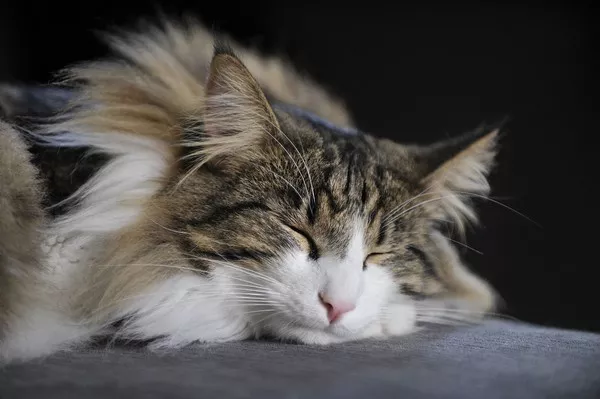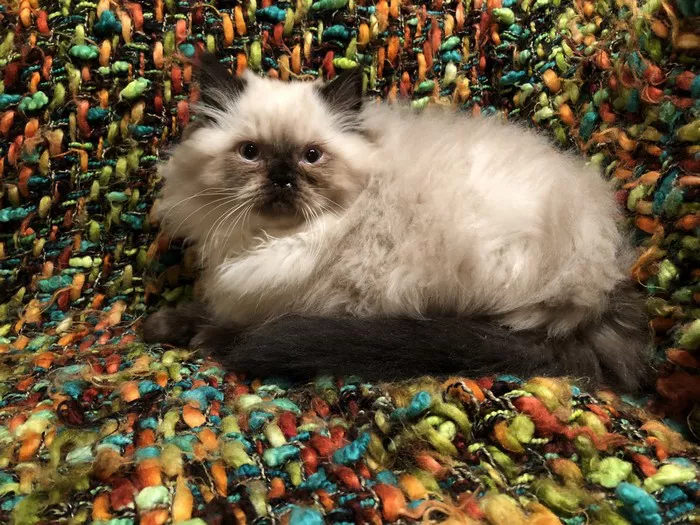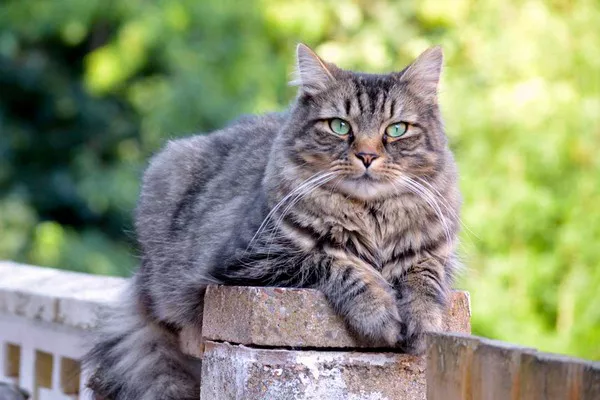Norwegian Forest Cats, renowned for their majestic fur and robust build, are among the most beloved breeds for cat enthusiasts around the world. Typically known for their large size, it can be puzzling when an owner notices that their Norwegian Forest Cat seems unusually small. This article explores various factors that could influence the size of a Norwegian Forest Cat, delving into genetics, health, diet, and more to provide a comprehensive understanding.
Norwegian Forest Cats
Breed Characteristics: The Norwegian Forest Cat, often referred to as a “Wegie,” is a breed known for its thick, luxuriant coat, large almond-shaped eyes, and sturdy body. Originating from Norway, this breed was designed by nature to survive the cold climate, featuring a water-resistant topcoat and a woolly undercoat for insulation.
Standard Size and Weight: Generally, male Norwegian Forest Cats weigh between 13 to 22 pounds, while females are slightly smaller, typically weighing between 9 to 18 pounds. They reach full physical maturity at around 5 years of age, which is later than many other cat breeds.
Genetic Factors
Breed Genetics: Understanding the genetics of the Norwegian Forest Cat is crucial. They are a naturally occurring breed, which means much of their development has been influenced by natural selection rather than selective breeding practices. This genetic makeup can lead to a range of sizes within the breed, much like the variation seen in humans.
Potential for Mixed Ancestry: If a Norwegian Forest Cat is notably smaller than average, it might be due to mixed ancestry. Breeding with smaller cats, either intentionally or accidentally, can introduce genes that may result in smaller offspring.
Genetic Disorders
Some genetic disorders can affect growth and development. Conditions such as hypothyroidism or growth hormone deficiency, although rare, can lead to smaller stature if they are present from a young age.
Nutritional Influences
Importance of Diet in Early Development: The diet of a Norwegian Forest Cat during its growth phases plays a crucial role in its physical development. Kittens require a balanced diet rich in proteins, vitamins, and minerals to reach their full size potential.
Common Dietary Concerns:
Malnutrition: Inadequate nutrition can stunt growth. Kittens not receiving enough calories or the right balance of nutrients may not grow to their full genetic potential.
Early Weaning: Kittens weaned too early from their mother’s milk may miss essential nutrients that promote optimal growth.
Recommendations for Optimal Nutrition
Feeding a high-quality, age-appropriate diet is essential. Owners should look for foods that meet the nutritional levels established by the AAFCO Cat Food Nutrient Profiles for growth in kittens and maintenance in adults.
Health and Development
Early Health Challenges: Health issues during kittenhood, such as parasites, infections, or severe illnesses, can impact overall growth and development. Chronic conditions or congenital defects can also lead to reduced size.
Importance of Veterinary Care
Regular check-ups can ensure that any health issues are identified and addressed early, supporting better overall growth and development.
Environmental and Care Factors
Stress and Growth: Chronic stress can affect the health and development of a kitten. Stressful environments, lack of socialization, and anxiety can lead to health issues that may stunt growth.
Living Conditions: Adequate space for exercise and play is crucial. Cats that are confined or have restricted movement may not develop muscle and bone strength as expected, potentially affecting their size.
Breeding and Lineage
Lineage Variability: There can be considerable size variability within the genetic lines of Norwegian Forest Cats. Some lines may naturally produce smaller cats due to historical breeding practices or genetic drift.
Understanding Breeder Information
Knowledge about a cat’s lineage can provide insights into expected size and health. Reputable breeders can often provide detailed information about the sizes of ancestors and the presence of any size-related traits in the lineage.
Conclusion
If your Norwegian Forest Cat is smaller than average, it is essential to consider a variety of factors, including genetics, diet, health, and environmental conditions. While genetics play a significant role, adequate nutrition, proper veterinary care, and a supportive environment are crucial for allowing any cat to reach its potential. If concerns about your cat’s size or health persist, consulting with a veterinarian to rule out underlying health issues is advisable. Remember, the size of your Norwegian Forest Cat does not affect its ability to provide companionship and joy in your life.
























